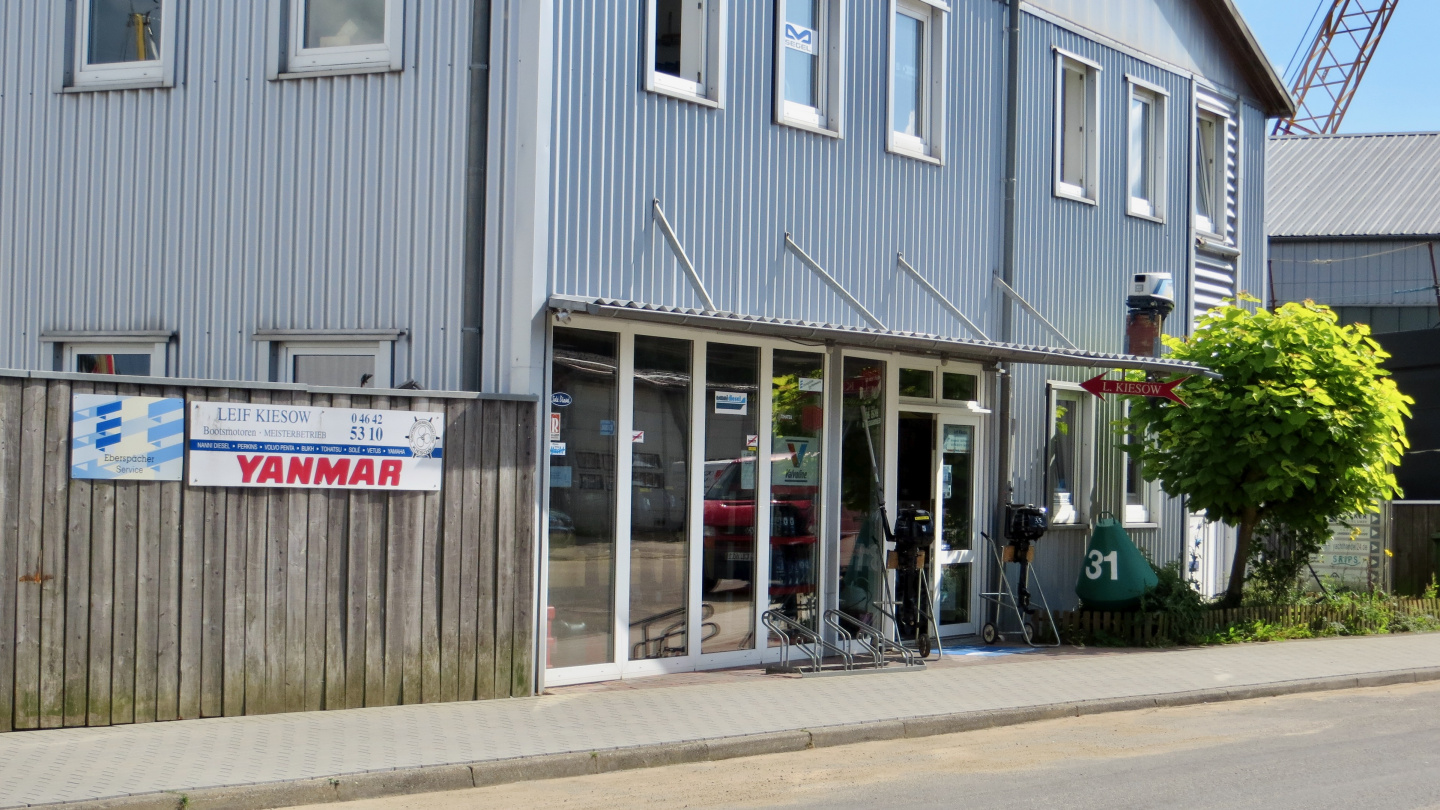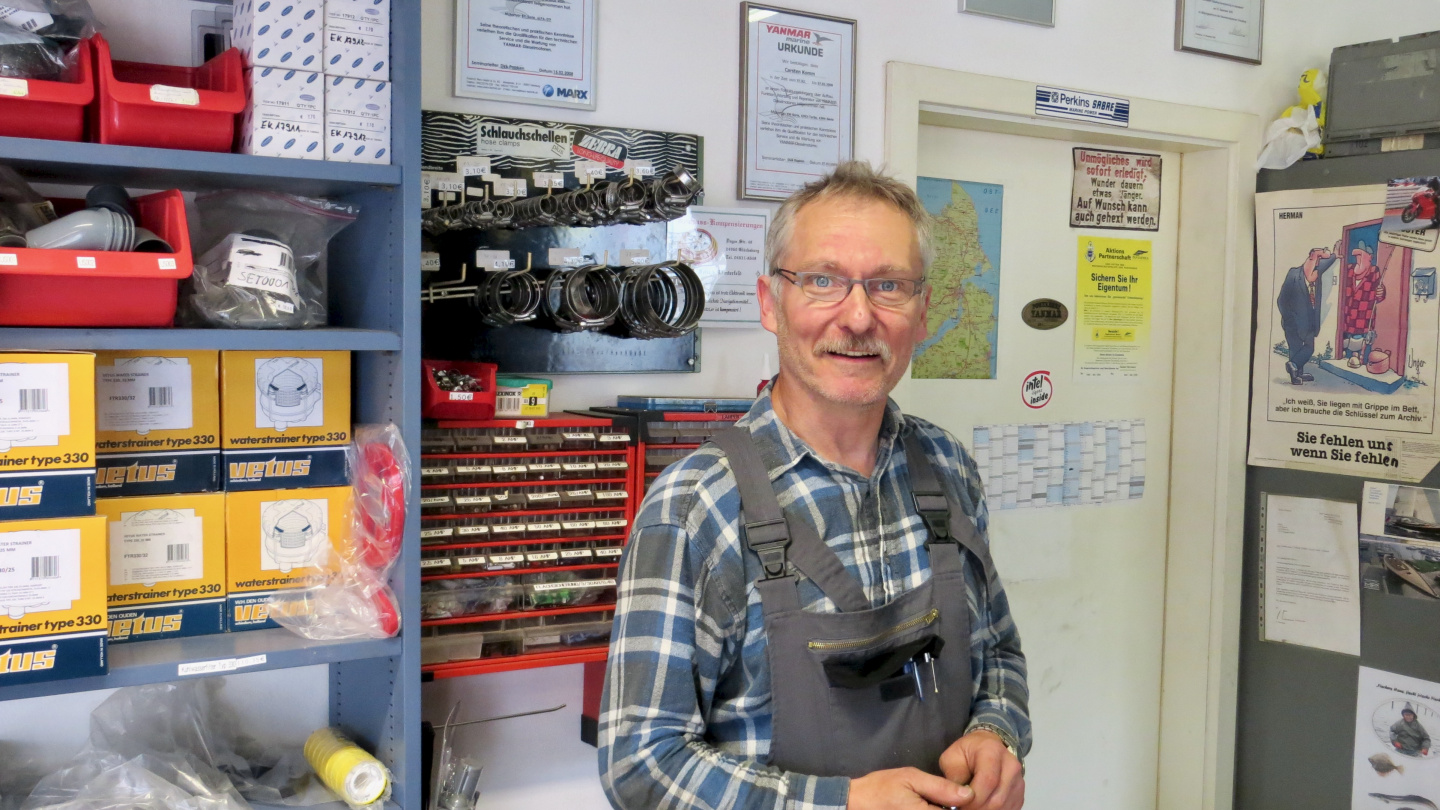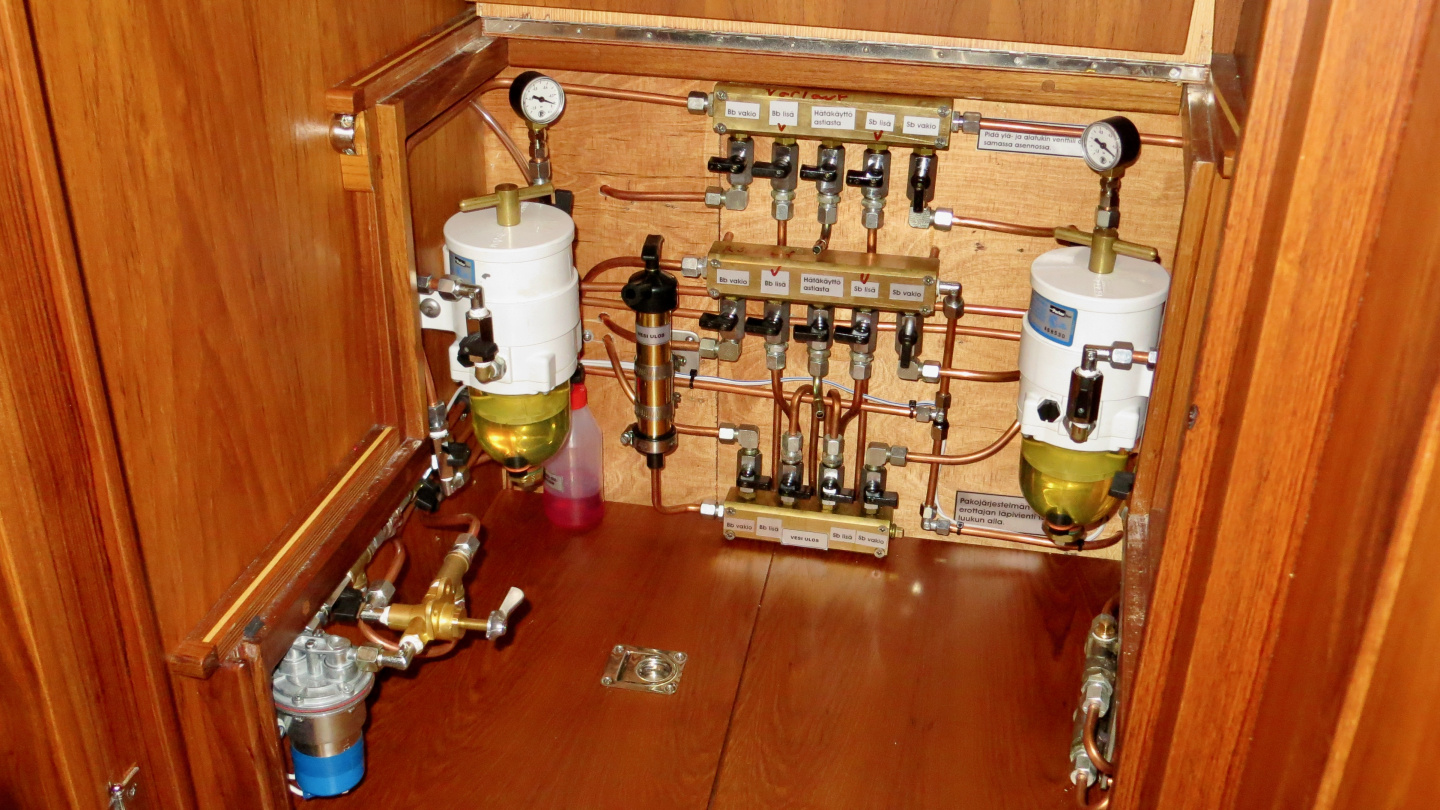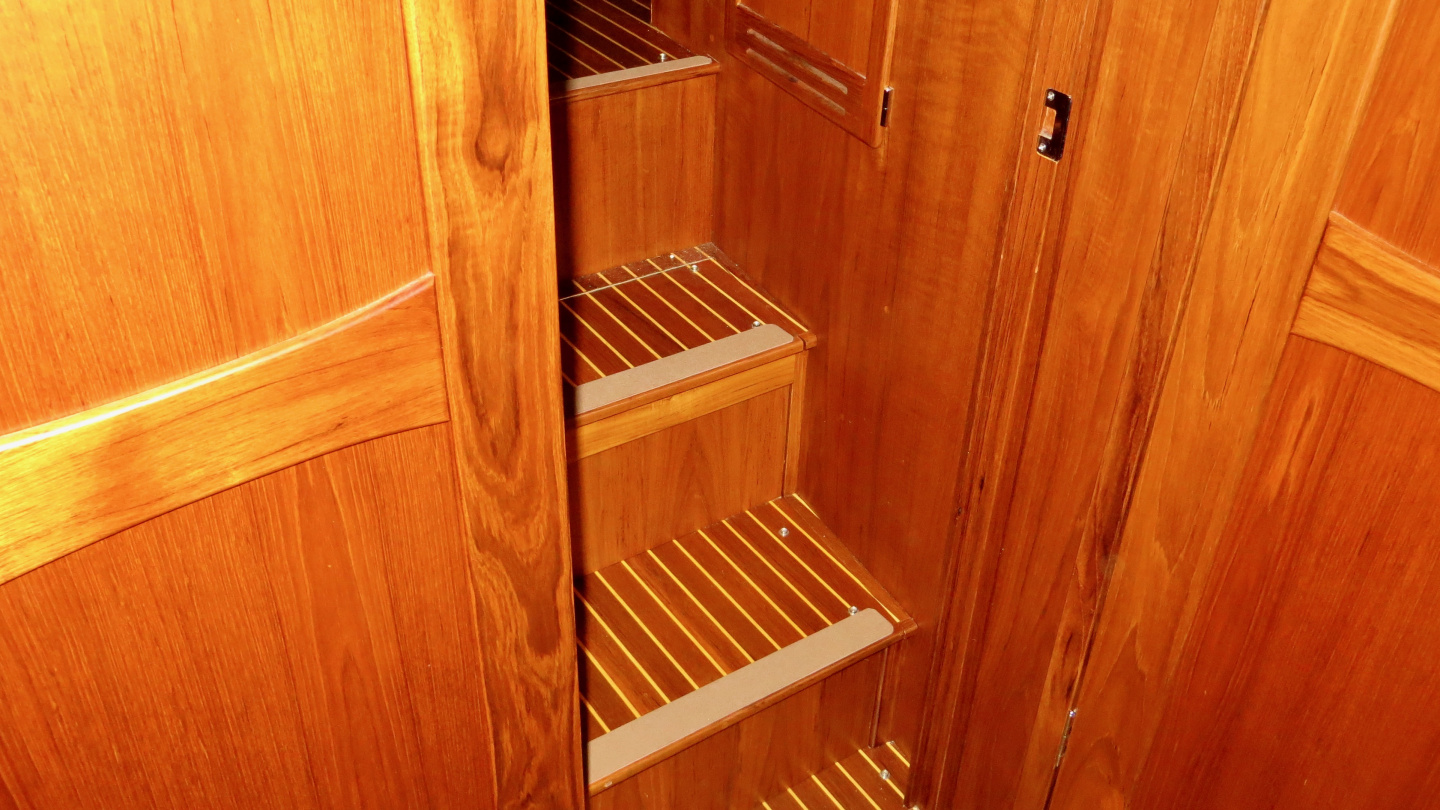There has been a lot of discussion on various forums about the quality of diesel fuel. There are many stories of stalled engines because of dirty fuel and a diesel bug. The latter is a mix of bacteria and algae sometimes found in the fuel tank.
We ourselves have not experienced any problems with fuel yet but we have friends whose engine has stalled in the middle of not so nice weather during the night. Fortunately they were able to sail to safe haven by using sails.
Our first line of defence is avoiding to get dirty fuel onboard at all. When refuelling Suwena we try to use places where the fuel pumps have a big turnover and the diesel is fresh. In addition we use Mr Funnel filter whenever we are refuelling. Our tanks have a total of 1060 litre capacity so we have a plenty of time when choosing a place to refuel. I think in general during the cruising season we need to refuel only once in every two to three month depending on fuel usage.
There will anyhow be some condensation water in tanks and the diesel by itself can get dirty as well. Therefore the second priority is to get the water and dirt out from tanks. Nauticat yard installes additional supply lines to tanks of their yachts which inlets are lower compared to regular supply lines. Near the fuel filters there is a hand pump to empty the water and dirt from the bottom of tanks. This is not completely without the problems thou. How much to pump out? Where to dispose the pumped out diesel? The boat is leaning anyhow in some direction and maybe we do not get all the water out. Also the using of the hand pump is a messy process, at least according to Eve.
So installing a fuel polishing system has been in my mind for some time. Previously we also looked at Nordhavn trawlers as one option for our boat. Nordhavn ocean going trawlers do not have sails and clean fuel is their #1 priority. All Nordhavn boats come with fuel polishing system onboard. We also talked with Nauticat about building one for us but finally decided to skip it. I did manage to secure that both for main engine and generator we have a same kind of Racor prefilters.
Now I had two similar Racor filters onboard. Unfortunately they were both feeding a different engine. One Racor 500 is rated at maximum 227 LPH (60 GPH). Both our main engine and generator consumption together is even at full power well below this number. Why don’t we make a reconnection where we run both engine and generator from one Racor and have a switchover possibility to another if one gets clogged?
We also did not have a way to measure how clogged our filters are? Usually sailors change filters once a season or when the engine dies. It should be straightforward to add a vacuum gauges to the filters.
A plan started to emerge but the final decision to upgrade the diesel system was done when we approached Świnoujście in Poland in quite bad weather. Our fuel filters are installed below the stairs to aft cabin and it literally takes a few seconds to see if they are ok. During the last few miles our fuel level in the tank was getting low and I decided to switch tanks in case there will be a delay on entering the harbour. After switchover I saw with flashlight some debris in a filter bowl and I changed tanks yet to the third one. Now I was in a situation that I did not know if in a second tanks the fuel was good or not. I changed the Racor filter element anyhow 🙁
At the same time there has been a lot of discussion about fuel and fuel polishing on Nauticat group at Yahoo. From there I saw an excellent story on diesel fuel polishing by Wil Andrews. In Kappeln we asked a quotation from a local diesel engine maintenance company Kiesow GmbH. Soon they were onboard checking if the space under the stairs is big enough and we closed the deal. During the last week before winter commissioning Mr Schmidt arrived aboard Suwena with all required parts and the work started. Many thanks to him for making the system and managing to put all components into such a small space.


I draw the diagram about Suwena’s new fuel polishing system.
In a diagram you can see two distribution blocks for fuel. One for supply line and one for return line. The same tank should be selected from both blocks. It is possible to select one tank for supply and another for return but then there is always a possibility of a fuel spill.
Fuel filters Racor 1 and Racor 2 are connected by the same way. By switching the pair of valves V1 and V2 on/off and at the same time valves V5 and V6 off/on I can select an active filter on the fly even when the engine is running.
Valves V4 and V8 bypass a Racor 1 and Racor 2 filters completely. These valves are used only in case the filter becomes clogged and changing the filter element is not possible. In this case there is still an additional filter on the engine.
Both Racor’s are fitted with a vacuum gauge. The gauge can show vacuum pressures until one bar but the filter element is clogged and should be changed when the reading is about 0.5 bars. Because gauges are vulnerable components it is a generally accepted practice to isolate them with valves, V3 and V7.
By using selector valve V9 we can feed the fuel directly to engine and generator or alternatively to the pump P1. The pump draws fuel through filters and feeds engines. The fuel that is not used by engine is passed through valve V11 and V12 back to tanks to complete the circulation. Valve V10 is for isolating the pump in case of the pump failure. The pump can be run both when the engine is running or is stopped.
Check valve V11 is to prevent engine from getting fuel directly from tanks through return line in case the pump is not running. Because the check valve is easily susceptible to break down it is also possible to separate it from system by using the valve V12.
Sounds complicated but in normal usage I will only use tank selector valves and valves for selecting either Racor 1 or Racor 2. If I want to run the electrical pump I switch the V9 to the pump side and turn pump on from electrical panel. All other valves are actually for rerouteing the fuel flow only in the case of malfunction. I think for the first time I now understand what rerouteing power in Star Trek means 🙂


After a few days of working Mr Schmidt had got it all together and it was time for a test run. After some small tweaks the new system worked flawlessly. My only surprise there was quite high noise from the pump but maybe there is still something we can do about this. Before winter storage I ran fuel polishing on all four tanks and there were no drama even on the tank I suspected in Poland. I guess there was just a little bit of sludge on the bottom of the tank that got mixed with diesel during the heavy seas. Next thing is to test the system during next spring while sailing in some moderate waves. All the sludge should be stirred up from the bottom of tanks and I should be able to filter it out. I will also remove the hand pump and patch a clear plastic hose from water out distribution block to the aux hose fitting on distribution block on supply line. I’ll keep you posted as the testing progresses.

